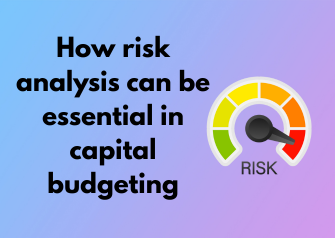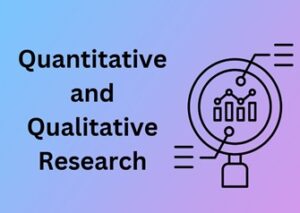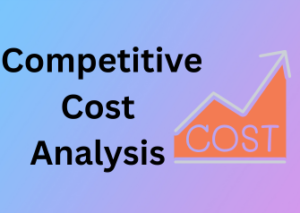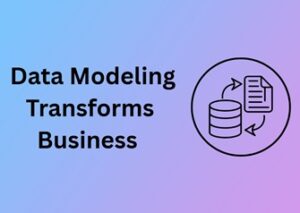Capital budgeting decisions often feel like a game of chess—each move, whether it’s a significant investment or a cautious scaling-back, has long-term consequences. But here’s the twist: unlike chess, where all the pieces and moves are visible, in the world of finance, there’s a powerful invisible player—risk.
So, what makes risk such a big deal in capital allocation? At its core, risk is the uncertainty that comes with any business decision. Ignoring it is like driving with blindfolds on—it might work for a while, but it’s bound to end in disaster. Let’s unpack why understanding risk is not just important but utterly essential when deciding where and how to allocate capital.
1. Unpredictable Outcomes Are Part of the Game
No matter how polished your spreadsheets are or how convincing your pitch deck looks, the reality is that no project is immune to the unexpected. Changes in the economy, shifts in market trends, regulatory adjustments, or even completely unforeseen events (hello, global pandemics!) can derail the best-laid plans. By factoring in potential risks from the outset, businesses make room to prepare for and adapt to these curveballs, instead of being blindsided at a critical juncture.
2. Capital is Finite—You Can’t Afford to Waste It
One hard truth: resources are always scarce. Whether you’re a multinational company with billions in assets or a budding start-up, capital is precious and should be used wisely. Evaluating risk helps decision-makers ensure that they’re investing where the likelihood of success matches or surpasses the potential gains. Spending capital on high-risk projects without assessing the stakes could drain resources that might be put to better use elsewhere.
3. Protecting Stakeholder Interests
Capital budgeting decisions ripple far beyond the boardroom. They affect employees, shareholders, customers, and even the broader economy. Imagine sinking funds into a project that turns out to be a debacle simply because the risks weren’t adequately assessed. Not only do you lose money, but you could also lose the confidence of stakeholders. By recognizing and analyzing risks early, you signal that you’re serious about safeguarding their interests. A win-win!
4. Risk Assessment as a Tool for Strategic Advantage
Identifying risks isn’t just about avoiding pitfalls—it’s also about spotting opportunities. When companies are proactive in assessing risks, they often gain better insight into their markets, competitors, and operating environment. For example, if you know there’s a potential risk of rising raw material costs, your business might be among the first to seek alternative suppliers, locking in lower prices before others catch on. Knowledge is power, and risk analysis gives you just that.
5. Balance: Avoiding Over-Caution
Let’s be clear: acknowledging risk doesn’t mean becoming paralyzed by it. One common misconception is that analyzing risk always leads to conservative or overly safe decisions. On the contrary, effective risk assessment allows you to take calculated risks. By determining what’s manageable and what’s a red flag, companies can confidently pursue ventures that might initially seem daunting but ultimately generate high rewards.

From Gut Instincts to Data-Driven Decisions: The Evolution of Risk Analysis
Let’s take a quick stroll down memory lane. Not too long ago, the world of capital budgeting was dominated by intuition and rule-of-thumb decisions. A seasoned executive might rely on their gut instincts or past experiences to green-light a project. And while there’s undeniable value in experience, a hunch works only so far in an increasingly complex and data-driven financial world. In today’s high-paced decision-making environment, simply “feeling” like a project might succeed doesn’t cut it. Enter: data-driven risk analysis, the game-changer.
The Rise of Data in Decision-Making
The shift from instinct to data in risk evaluation hasn’t happened overnight. Over the decades, businesses have realized that failing to consider and quantify risks can lead to costly consequences. Think back to the tech bubble or the financial crisis—many of those situations arose, in part, because people made decisions without adequately assessing the risks. Lessons learned? Numbers don’t lie, and ignoring them often leads to regret.
Today, advances in technology and analytics have made it easier—and more critical—to assess risks systematically. Thanks to tools like statistical modeling, scenario analysis, and real-time data tracking, companies can now better identify potential pitfalls before committing their resources. This transition hasn’t just improved outcomes; it’s drastically reduced the guesswork in capital budgeting.
The Advantages of Data-Driven Risk Analysis
Why is moving away from gut instincts such a breakthrough? Here are just a few benefits that data brings to the table:
- Consistency: Data-driven methods follow repeatable frameworks, reducing the influence of personal biases or emotions.
- Transparency: Numbers create an audit trail. You can explain why certain risks are manageable and why others raise red flags.
- Comparability: Data enables benchmarking across projects, making it easier to see which opportunities align with your organization’s goals.
- Scalability: Modern analysis methods can adapt to businesses of any size without overly complicated processes.
In short, data gives decision-makers the confidence (and evidence) they need to act smartly, not just quickly.
Intuition Isn’t Dead: Data and Instinct Working Together
Now, let’s not be too harsh on intuition. Human insight is still a powerful tool in the right hands. The real magic lies in aligning intuition with data, creating a well-rounded approach to evaluating risks. For instance, a project might “feel” risky, but a deeper dive into the data could show mitigants that ease those concerns. Alternatively, the data might validate those gut-check warnings, keeping your company from making a critical misstep.
Think about it this way: intuition provides the starting hypothesis, but data fills in the details to confirm or adjust the course. It’s no longer one versus the other; it’s both, working hand in hand.
What’s Next for Risk Analysis?
The future of risk analysis is exciting. Predictive analytics, artificial intelligence, and machine learning are making forecasts even more accurate. Businesses now have the ability to simulate endless “what-if” scenarios, offering unparalleled clarity into potential outcomes. If anything, capital budgeting is becoming less of a gamble and more a calculated, confident game plan.
In closing, the journey from gut instincts to data-driven decisions reflects how far risk analysis has come. It’s no longer about guessing in the dark—it’s about making informed, evidence-backed choices every step of the way. So here’s the pro tip: embrace the data, but don’t ignore the wisdom your instincts bring to the table. Together, they’ll guide you toward safer, smarter capital budgeting decisions.

Connecting Risk Metrics to Real-World Financial Outcomes
When it comes to capital budgeting, there’s no denying the pivotal role risk metrics play. But for many professionals, these numbers can feel like abstract figures—detached from the reality of decision-making. The true power of risk analysis lies in its ability to bridge the gap between data and actionable insights, helping organizations make better, more confident financial decisions. Let’s delve into how risk metrics can directly influence real-world outcomes and why they matter more than you might initially think.
From Numbers to Narratives: The Story Behind Risk Metrics
Risk metrics are more than a mathematical exercise; they’re a storytelling tool. Tools like Value at Risk (VaR), probability distributions, or sensitivity analyses help us quantify the “what ifs” of a project. While these can seem daunting at first glance, their true benefit lies in their ability to paint a clear picture of financial consequences.
For example, imagine you’re accounting for the risk of launching a new manufacturing plant. A sensitivity analysis might show how your profitability could plummet if raw material prices increase by 20%. This is no longer just a number—it’s a narrative about how external factors could derail your project. Being able to connect the metric back to a tangible real-world impact is what turns analysis into action.
The Dollars and Sense of Risk Metrics
Properly connecting risk metrics to financial outcomes ensures your capital allocation decisions are grounded in reality. Let’s take a common risk metric: expected monetary value (EMV). Using EMV, you can weigh the potential risks of a project against its expected return by assigning probabilities and financial consequences to each potential outcome.
For instance, consider an infrastructure project where there’s a 40% chance of an overrun costing $1 million and a 60% chance of staying within budget. Simple math gives an EMV of $400,000 for overruns. With this information, you can decide whether the project’s potential profit is worth accepting that financial “bump in the road,” or whether mitigation strategies should be pursued. The goal? To link abstract metrics back to your balance sheet so you’re not flying blind.
Risk Reduction is Profit Protection
Effective risk analysis isn’t just about identifying where things can go wrong—it’s about taking steps to safeguard your investments. Integrating risk metrics into your financial strategy protects profitability in tangible ways: think optimizing cashflow, avoiding over-leveraging, or preventing costly delays. For instance, your risk analysis may suggest the need to build a financial buffer to handle unexpected risks without derailing the entire project.
In practical terms, such measures might mean reallocating resources, renegotiating supplier contracts, or rethinking timelines. Each mitigation step is powered by the insights your risk metrics deliver, transforming hypothetical threats into actionable solutions.
Putting It All Together
- Risk metrics are your compass: Without them, you’re navigating complex investments without direction.
- Every number tells a story: When translated correctly, metrics reveal the deeper financial implications of uncertainty.
- Prevention beats reaction: Proactive use of risk insights saves your bottom line from unnecessary shocks.
- Risk doesn’t end analysis—it guides action: The end goal is to adapt plans and strategies based on real data.
Ultimately, connecting risk metrics to financial outcomes empowers you to make choices that balance opportunity and caution. By marrying crunch-worthy data with strategic leadership, you not only protect organizational health but also position yourself as a savvy decision-maker. Remember, risk isn’t something to fear—when handled correctly, it’s the secret to smarter capital investments.
Common Oversights and Mistakes When Ignoring Risk Evaluation
Let’s be honest—no one loves talking about risks. It’s far more exciting to focus on the big picture: growth potential, market expansion, the shiny promise of a successful project, right? But here’s the thing: skipping over risk evaluation is like preparing for a long hike and forgetting to check the weather forecast. Sure, you could luck out with clear skies, but without preparation, you also run the risk of being caught in a sudden downpour with no shelter in sight.
In capital budgeting, overlooking risks introduces cracks into your decision-making process—and these cracks can quickly become chasms. Let’s explore some of the most common oversights and mistakes professionals make when they shy away from proper risk evaluation, and learn how to avoid them.
1. Believing That Experience Alone Is Enough
Experienced decision-makers are invaluable, but even the most seasoned professionals can fall into the trap of over-relying on intuition. While industry expertise is an asset, it’s not immune to blind spots. Markets evolve, and external shocks—like economic downturns or advances in competitors’ technology—can render gut instincts less reliable. Without data-backed risk analysis, your “gut call” may miss the full picture.
The fix? Blend experience with measurable metrics. Tools like scenario analysis or sensitivity analysis can complement your expertise and reveal risks that may not be immediately apparent.
2. Confusing Optimism with Certainty
It’s easy to get swept up in optimism, especially when a project seems destined to succeed. Positive assumptions about market growth, cost structures, or future cash flows can make even modest projects look dazzling. But here’s the hard truth: optimism does not guarantee certainty.
The danger here is that people often see risk evaluation as a “buzzkill” when they’re excited about a project—and that mindset leads them to underestimate factors like delays, budget overruns, or shifts in customer demand. A more balanced perspective will help you temper your optimism with reality, steering clear of nasty surprises.
3. Overlooking Macro-Level Threats
Risk analysis that focuses solely on immediate, project-specific risks can miss the bigger picture. For example, external factors like inflation, geopolitical events, or raw material price volatility can upend even the most carefully planned projects. Ignoring these macro-level risks can leave capital investments exposed to systemic challenges that weren’t factored into initial calculations.
A smart workaround? Make sure your risk assessments account for external uncertainties. Stress testing and scenario planning can provide a better sense of how broader economic pressures might affect your project.
4. Failing to Monitor Risk Post-Decision
Risk analysis shouldn’t end once you’ve decided to proceed with a project. Risks evolve over time, and assumptions that were valid during the planning phase might no longer hold true. Unfortunately, many teams fall into the “set it and forget it” trap, treating risk evaluation as a one-time hurdle instead of an ongoing process.
To avoid this mistake, adopt a proactive strategy of regular reviews, coupled with KPIs that can act as warning signals if the risk environment shifts. This makes it easier to pivot or recalibrate when needed.
5. Viewing Risk Analysis as an Afterthought
Risk evaluation often happens too late in the budgeting process—sometimes even as a box-checking exercise. When viewed as an afterthought, its true value is diminished, and businesses are more likely to proceed with misinformed confidence.
The remedy? Prioritize risk evaluation from the start. Make it an integral part of every stage of the capital budgeting process, ensuring that decisions are informed by a comprehensive understanding of both risks and rewards.
Avoid Pitfalls with Proactive Preparation
If nothing else, remember this: good risk analysis doesn’t slow you down—it gives you a competitive edge. The mistakes outlined above aren’t meant to scare you, but rather to encourage a more thoughtful approach. By recognizing these common pitfalls and committing to a culture of proactive risk evaluation, your capital budgeting efforts will be that much stronger. And who doesn’t want a smoother, smarter path to success?
Case Studies: Lessons Learned from Successful and Failed Projects
When it comes to risk analysis in capital budgeting, diving into real-world examples can provide invaluable lessons. Case studies are like roadmaps—they help us see where things went right, where they went wrong, and how to navigate similar challenges in our own projects. Let’s explore a few notable cases, unpack the takeaways, and see how effective (or neglected) risk analysis played a critical role.
Success Story: The Power of Diversifying Risk – Project X Renewable Energy
Project X was an ambitious renewable energy project aiming to set up wind farms in three different geographical locations. From the very beginning, the team understood the potential risks: inconsistent government subsidies, variability of wind conditions, and challenges with supplier delays. Instead of focusing all their resources on one location, they diversified their efforts across all three, thereby spreading the risk.
To enable this, they conducted extensive Monte Carlo simulations to determine potential project outcomes under varying conditions. The results showed that diversification would significantly mitigate potential losses if one or two locations underperformed. By embedding this approach into their strategy, the project not only achieved its financial benchmarks but also exceeded expectations in one location, compensating for minor setbacks in another.
The Key Takeaway: Diversification of resources and detailed scenario planning based on rigorous risk analysis can safeguard your investments and maximize success.
Failure Pitfall: Ignoring Risk Warnings – The Construction Mega Mall Saga
On the flip side, there’s the infamous case of a construction company that built what was supposed to be the “largest and most luxurious mega mall” in a mid-sized city. Unfortunately, the project was an epic failure. Why? The company didn’t take their own demand modeling seriously. Early risk assessments indicated that the city’s demographic trends were shifting away from the retail-focused business model that the mall was designed for. They ignored those warnings, banking instead on their gut feelings that “if you build it, they will come.” Spoiler: they didn’t.
To compound the problem, costs ran over budget because their suppliers hadn’t been properly vetted, and nearly 20% of materials arrived months late. Both of these problems were flagged in preliminary risk assessments, but decision-makers kept pushing forward.
The Key Takeaway: Risk analysis can only help you if you use it. Ignoring red flags—be it market demand, logistical issues, or even small hiccups—can lead to catastrophic failures.
The Grey Zone: A Lesson in Mixed Outcomes
Finally, let’s take the case of a mid-tier tech company launching a new product. On paper, their forecasts were stellar, and they conducted several risk analysis techniques, including sensitivity analysis, to gauge potential market fluctuations. However, the company underestimated one critical risk: competition. By the time their product hit the market, a larger competitor had already launched a similar product at a lower price point.
While they didn’t fail outright, their financial returns fell short of initial projections. Still, their fallback plan—derived from their risk evaluations—allowed them to pivot and position the product differently, eventually carving out a smaller but sustainable niche. Not ideal, but certainly not a disaster.
The Key Takeaway: Even if risk analysis can’t guarantee perfect outcomes, it can help you soften the blow and adapt to changing circumstances.
Lessons That Stand the Test of Time
- Be thorough: Risk analysis is more than a checkbox—it’s the bedrock of informed decision-making. Use tools like simulations, scenario planning, and sensitivity analysis to uncover weak spots in your plans.
- Trust the data: Even if it contradicts your instincts, leaning on objective risk evaluations can prevent costly mistakes.
- Prepare to adapt: Not all risks can be eliminated, but having contingency plans can transform potential disasters into manageable challenges.
By studying both successes and failures, we can gain a deeper understanding of how to apply risk analysis effectively. After all, every project has risks—it’s how we manage and prepare for them that makes all the difference.
Methods for Quantifying Uncertainty Without Adding Complexity
Let’s face it—when it comes to capital budgeting, quantifying uncertainty can seem overwhelming. But what if I told you that you don’t need a PhD in statistical analysis or super complex models to bring clarity to the uncertainties surrounding your investments? The truth is, there are plenty of straightforward methods to measure uncertainty in a way that’s both practical and effective. Let’s break it down and keep it simple, shall we?
Start with Scenario Analysis
Scenario analysis is like the “imagine if…” exercise for your projects. By considering different possible futures—like best-case, worst-case, and most-likely scenarios—you can get a robust sense of how uncertainty might play out. Here’s how it works:
- Best-Case Scenario: Think about what happens if everything goes perfectly. The market is booming, your costs are lower than expected, and competition is minimal.
- Worst-Case Scenario: Now flip it. What would happen if markets take a downturn, expenses rise, or demand falls flat?
- Most-Likely Scenario: Somewhere in between. Use historical data and realistic trends to pinpoint the outcomes you’re most likely to face.
By comparing outcomes across these scenarios, decision-makers can gauge how sensitive a project’s performance is to various factors—offering a realistic roadmap without overwhelming complexity.
Sensitivity Analysis: The “What-If” Method
Sensitivity analysis is another simple yet powerful way to quantify uncertainty. Instead of imagining full-blown scenarios, this method tweaks just one variable at a time to see how it impacts outcomes. For instance:
- What happens to profits if raw material costs rise by 10%?
- What’s the breakeven point if sales volumes dip by 5%?
- How does a delay in launch push the project’s ROI?
Think of this method as a stress test for your project. It shows you which factors have the biggest impact on success (or failure) so you can manage them more proactively.
Embrace Probabilities (Without Fear)
The word “probability” might sound intimidating, but relax—basic probability concepts can go a long way in helping you understand risks. Assigning probabilities to different outcomes (e.g., a 60% chance of hitting target revenue or a 30% chance of missing it) makes the risks feel tangible. You can even combine this with scenario analysis by assigning probabilities to your best-, worst-, and most-likely scenarios for a clearer picture.
Pro Tip: You don’t need complicated software to assign probabilities. Simple tools like spreadsheets can help you calculate weighted averages or visualize risk distributions with ease.
Tools Can Be Your Best Friend
Many accessible tools exist to help with these methods. From Excel spreadsheets with pre-built formulas to user-friendly financial modeling software, you don’t need to be a data scientist to use them. These tools simplify the process of calculating risk-adjusted returns, identifying breakeven points, or even generating Monte Carlo simulations if you’re feeling adventurous.
Simplicity Meets Actionability
The goal isn’t to overcomplicate things; it’s about finding methods that best suit your team’s needs and decision-making style. By using tools like scenario analysis, sensitivity tests, or basic probability modeling, you can break down uncertainty into manageable chunks—making risk feel like something you can tackle, not just endure.
Bridging Analysis with Action: Building Strategies Around Risk Insights
Risk analysis often raises one big question: what do we do with all this data? It’s one thing to spot risks and attach probabilities to them. But turning those insights into actionable, practical strategies? That’s where the magic happens. Don’t worry, though — it’s not as complicated as it sounds. Let’s dive into how you can take risk analysis and channel it into smart, effective decision-making while keeping your team confident and informed.
The Transition from Data to Strategy
First things first: risk analysis isn’t just an item on a checklist. For real success, businesses need to embrace it as a dynamic tool for shaping their capital budgeting strategies. When performed thoughtfully, risk analysis can guide decisions, preventing over-optimism or unnecessary hesitation. The key is integrating the data into actionable steps. This doesn’t mean running endless simulations or overwhelming your budget meetings with charts. Instead, focus on creating a clear, prioritized list of potential risks and corresponding strategies to address them.
Set Clear Goals for Risk Response
Once you’ve identified potential risks, think of them as opportunities in disguise. Ask yourself: how can this knowledge drive better results? A strong risk strategy should aim to accomplish three things:
- Reduce exposure: Identify ways to minimize the chances or impact of the risk.
- Create backup plans: Be prepared to pivot if things don’t go as expected.
- Make informed decisions: Use data to confidently back big moves and avoid paralysis from uncertainty.
Go Beyond Reactive Thinking
One mistake often made in capital budgeting is focusing solely on defense. While mitigating risk is crucial, proactive use of risk insights is just as important. For example:
- Which projects have the highest potential upside if risks are successfully managed?
- Are there ways to use risk analysis to improve vendor contracts, financing decisions, or project delivery timelines?
- What resources (time, capital, or human) should be allocated based on the areas with the most variability?
When you think proactively, your strategy becomes less about avoiding failure and more about enabling success.
Engaging Stakeholders with Insights
Remember, risk data doesn’t live in a vacuum — it directly impacts teams, investors, and leadership. Communicate your findings effectively by translating numbers and probabilities into a compelling narrative. Use charts sparingly and focus on answering key questions, like:
- How do these risks align with or deviate from company goals?
- Are there quick wins or long-term shifts we can pursue based on this data?
- How is our risk tolerance guiding these decisions?
By packaging the analysis into actionable insights, you’ll inspire confidence and buy-in across the board.
Embrace Flexibility in Execution
Plans don’t always unfold perfectly — and that’s okay! Building flexible strategies around your risk insights ensures that even when external conditions shift, you’re prepared to pivot. Consider establishing a periodic review process to revisit your assumptions and assess whether the risks are playing out as expected. This dynamic approach turns risk analysis into a continuous source of value, rather than a one-time activity.











